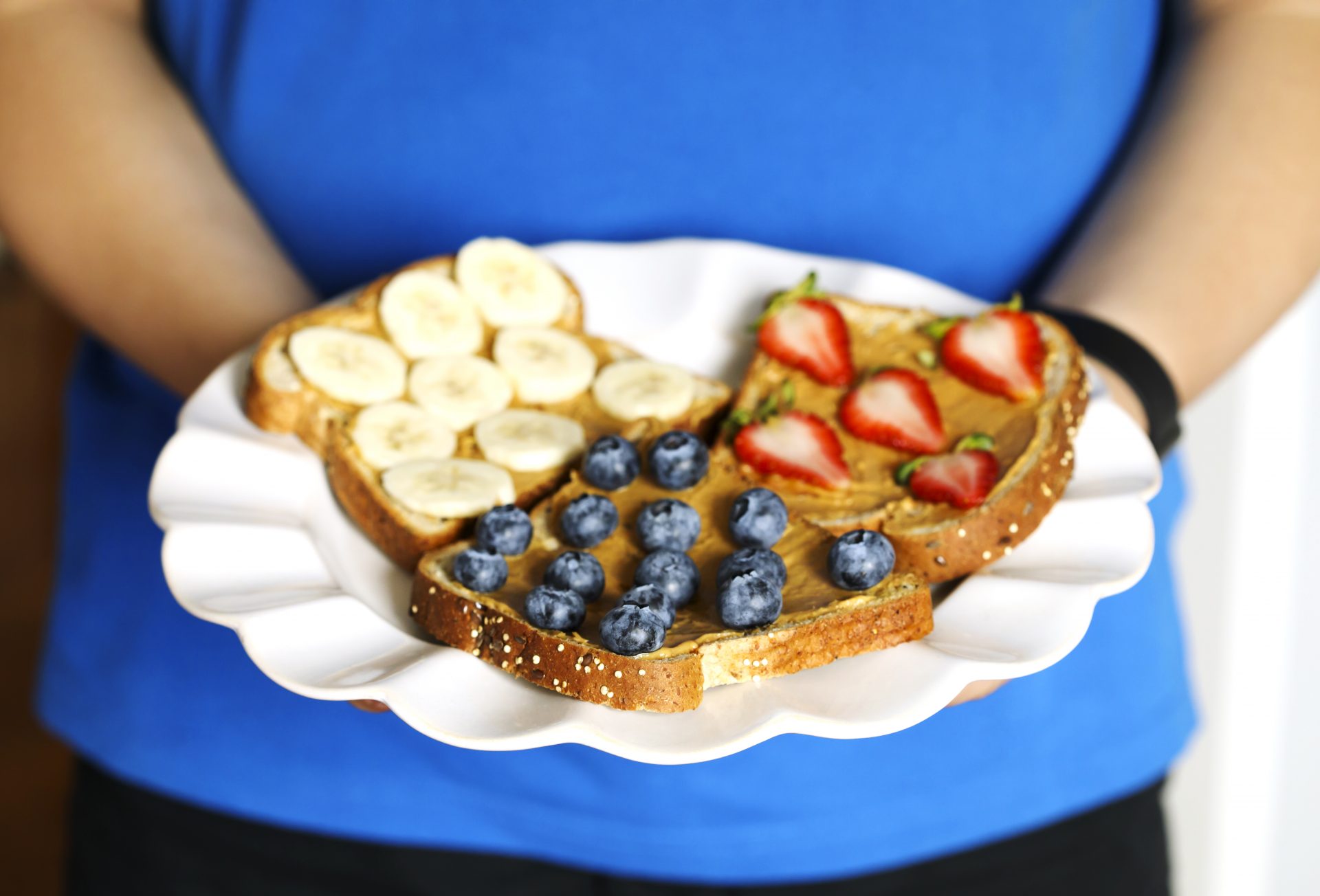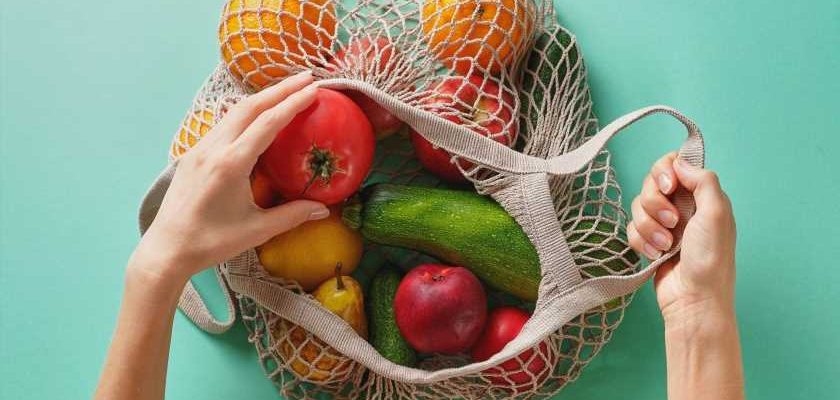This January, we’re on the search for quick, accessible hacks to kickstart 2023 in the strongest way possible. Today’s nutritional kickstarter: 7 tried and tested hacks for eating more plants this Veganuary.
If there’s one thing nutritional experts agree on, it’s the importance of eating plants. You can live without carbs (according to keto fans), you can thrive without animal proteins (so say vegans) but you absolutely cannot do without plants like fruit and veg.
In fact, a huge 2019 study found that low fruit consumption may have contributed to more than 1 million deaths from stroke worldwide, and more than 500,000 deaths from heart disease every year. Low vegetable intake accounts for 200,000 stroke deaths and over 800,000 heart disease fatalities per year.
Despite that, according to data from Asda, over 70% of British adults aren’t eating the recommended minimum of five portions of fruit and vegetables a day. That means that the vast majority of us aren’t getting our fill of the vital vitamins and antioxidants needed to keep our cells healthy, organs happy and minds functioning.
You may also like
Veganuary: “Everything I learnt about vegan nutrition from fitness food subscription”
How much fruit and veg should we be aiming to eat?
Newer guidance has suggested that the five-a-day recommendations don’t even go far enough; instead, they say that we should be aiming to eat 30 plants a week. That means eating a wider array of plant-based wholefoods like nuts, beans, berries and leaves over a seven day period.
If you’re not meeting five portions a day, however, then aiming to eat 30 plants a week might feel totally impossible.
In her book, The Science of Nutrition, nutritionist Rhiannon Lambert says that any balanced diet that’s based on whole grains, pulses, vegetables, fruit, nuts and seeds should see you “easily exceeding the guidelines for eating five portions of fruit or veg a day”. In other words, if you’re struggling to meet that target, you’re not eating a balanced diet (with obvious exceptions for those who can’t digest a lot of fibre or who are on a GP-approved diet).

A balanced plant-first diet in her book means eating “lots of veg” – “as many as you can, of as many different colours as you can”, a handful of whole grains, legumes, fruit and leafy greens, and a little fat (think: half an avocado, a spoon of nut butter).
“There is a lot of research supporting the argument that a plant-based diet increases longevity and reduces the risk of certain health conditions,” Lambert says. That’s largely down to the fact that plant-heavy diets tend to be lower in saturated fats and higher in gut-loving fibre.
Of course, “there are healthy people who eat animal products and healthy people who only eat plants,” but Lambert recommends increasing your plant intake to enjoy the best of both worlds.
With that in mind, how can you add more plants into your diet without having to think too much about your diet, and in a way that is sustainable beyond Veganuary?
1. Start the day with fruit
The easiest way to eat more plants is to get your first portion early on. Whatever else you like to have for breakfast, aim to have some fruit as well.
That might be a glass of fresh orange juice, slices of banana with muesli or a handful of blueberries on your porridge. Not only is fruit wonderfully refreshing but it’s a great idea to start the day with plenty of vitamin C.
2. Always make plants the largest thing on your plate
While there’s nothing wrong with a huge bowl of pasta, it’s worth looking at the way in which you tend to build your plate. Start with your veg: you might chop some fresh tomato, cook up a few broccoli blooms, cut some cucumber, and then add your carb and protein.
By working plant-first, you can prioritise getting those crucial minerals and fibre in before moving onto perhaps more tasty or filling bits of the meal. Aim to fill half the plate with plants at every meal (you may have to work up to that).
3. Mix veg into rice or pasta
Of course, a really easy way to ensure that the plate is plant-heavy is to stick veg into everything. I like to add peas, corn and cauliflower florets into rice when I’m boiling it (just add them at the very end, when the rice is steaming). Not only does that pad the rice out so that it lasts for more meals, but it also means that the rice part of the meal includes a portion of plants.
While courgetti is quite a depressing substitute for spaghetti, you could mix it or carrot ribbons in with actual pasta. Have that with a tomato-based sauce that also includes onions, basil and mushrooms, and you’ve got yourself a meal that’s at least two, if not three, portions of veg.
4. Swap salty condiments for fresh lime or lemon juice
One of the main reasons that people fail to meet their base fruit and veg targets, apparently, is that they find plant-food tasteless. While that’s categorically untrue, it does raise a valid point: many of us consume so much salt and sugar that we’re almost taste-blind to natural flavours.
In any case, one great hack for getting more nutrition into your diet is to squeeze lime and lemon juice onto your food – dosing it in vitamin C and making certain nutrients more bioavailable.
A paper in the Annals of the New York Academy of Sciences explains that animal-based iron doesn’t usually need much help with being put to use, but that non-heme iron sources (plants) are aided by the ascorbic acid found in citrus, which it calls a “powerful enhancer of nonheme iron absorption”. So, drizzle lemon juice over your lentils, kale and spinach to make them even more nutritious.
5. Blend veg into your smoothies
Smoothies don’t have to just include bananas and strawberries; next time you’re looking to blitz up a breakfast or mid-morning snack, stick in a handful of spinach or some avocado to balance out the natural sugars and add some more variety in there. Remember: smoothies, like juices, only count as one portion no matter how much you drink but that doesn’t mean you shouldn’t experiment with different flavours and textures. Increase the fibre by mixing in flaxseeds and plant-based protein with chia.
I like to make smoothie bowls as a pudding; make your smoothie, add a dollop of nut butter, a spoon of yoghurt, some seeds, chocolate buttons or dried coconut on top, stick a couple of digestive biscuits in there for some crunch, and you’ve got yourself an epic dessert.
6. Remember your snacks
You don’t just have to eat fresh food. Dried banana chips and fat medjool dates are sweet, delicious, and make for brilliant 3pm snacks. Two dates is one portion. For savoury lovers, try Brave’s roasted peas or Katie’s Food Company banana crisps (a packet of which counts as one of your five a day).
7. Get inspiration from ready-made meals
Eating more plants doesn’t simply mean boiling up a load of veg and eating it as it is. The key to committing to a greener diet is variety and taste, and there are so many snacks, dips, ready-made meals, food delivery services and other veg-first companies out there to make plant-heavy living more fun and accessible.
If you don’t know where to start, why not subscribe to something like Allplants, a plant-based meal subscription service that has loads of exciting meals and packages for vegans, vegetarians and plant-curious meat eaters. ChicP (available on Ocado) does a range of veggie bites and interesting dips (beetroot and horseradish hummus, anyone?), while M&S, Tesco and Sainsbury’s all have their own excellent vegan ranges – much of which is plant-centred.
Images: Getty
Source: Read Full Article
